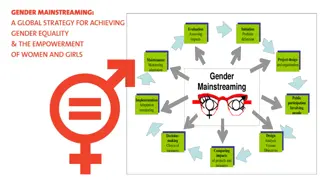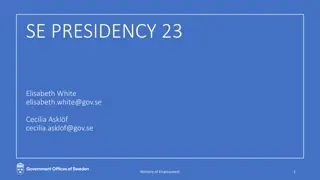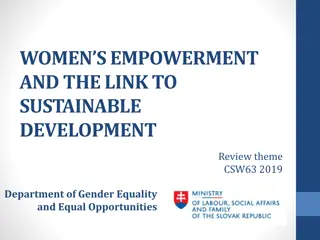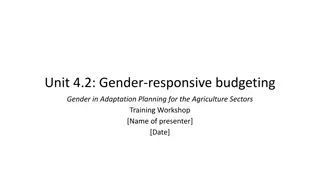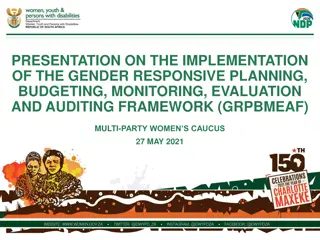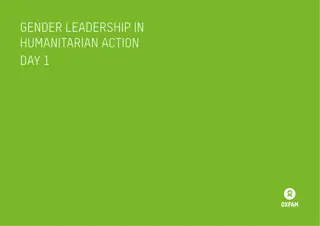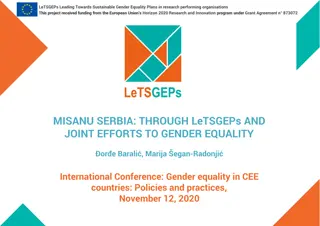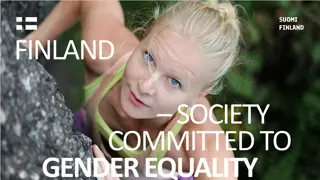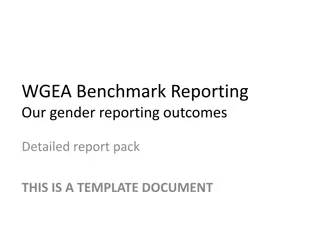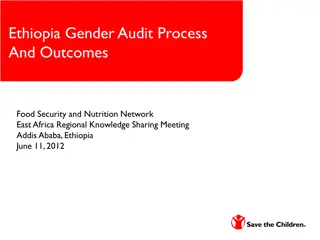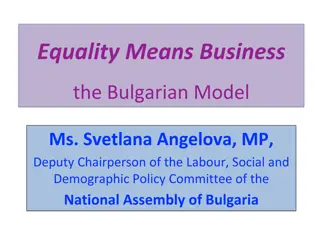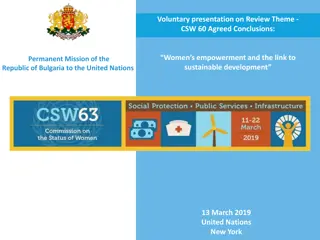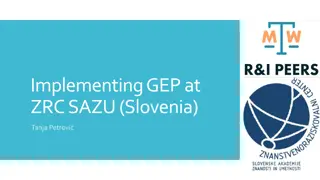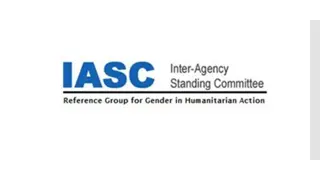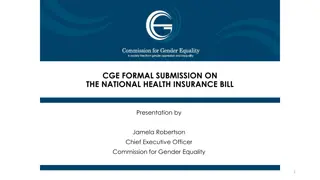Gender Equality and Rights: Insights from Research Projects and Policy Implementation
This content discusses gender equality and rights, drawing on various research projects funded by organizations like the World Bank and Oxfam UK. It covers topics such as political rights, property ownership, employment rights, gender-based violence laws, and the challenges in policy implementation for promoting gender equality. The role of the Ministry of Gender and Family Promotion, feminist research, and sociological perspectives on gender equality are also highlighted.
Download Presentation

Please find below an Image/Link to download the presentation.
The content on the website is provided AS IS for your information and personal use only. It may not be sold, licensed, or shared on other websites without obtaining consent from the author.If you encounter any issues during the download, it is possible that the publisher has removed the file from their server.
You are allowed to download the files provided on this website for personal or commercial use, subject to the condition that they are used lawfully. All files are the property of their respective owners.
The content on the website is provided AS IS for your information and personal use only. It may not be sold, licensed, or shared on other websites without obtaining consent from the author.
E N D
Presentation Transcript
This paper draws on a number of research projects that have variously been funded by: the World Bank, Oxfam UK, ActionAid, UNFPA, Population Media Centre, Senate, Access to Finance Rwanda and the African Development Foundation. Our colleagues at IPAR including John Rwirahira, Roger Mugisha, Lillian Mutesi, Carine Tuyishime and Paul Kalisa have worked with us on many of these projects We alone remain responsible for the content of our presentation
The Constitution gender equality Domestication of International Rights Conventions Political Rights voting , 30% quotas for public office and other senior positions Property, Ownership and Land equal rights to inherit and own property with men Rights in the Family both parents responsible for children , rights on divorce and for widows Employment Rights maternity leave, sexual harassment, equal opportunity Gender Based Violence GBV law
Ministry of Gender and Family Promotion in the PMO Cross-cutting issues in Vision 2020 and EDPRS Gender Policy and Strategic Plan Girls Education Policy Gender Strategy for Agricultural Gender Informed Budgeting Gender Monitoring Office Women s National Council Quotas for Political Representation But policy implementation gap, lack of expertise and knowledge of gender and equality, lack of policies and programmes specifically tagetted to enable women to make up their historic disadvantage.
Sociology and feminist research - commitment to gender equality Sociology and Human Rights an uneasy relationship objective scientist and partisan political activist, the study of society and the pre-social Public Sociology and Human Rights whose rights / which rights? Sociology of Human Rights issue for sociological enquiry institutionalised in the broad structures of society but remains a contested terrain The lived experience of men, women and children
Poverty Reduction and Gender Education and Gender Health Inheritance and property ownership Employment Political Power Family and Intimate Relationships Issues bride price, traditionally married women, husband as head of household, high olerance of and rates of domestic violence
Majority of Agricultural Workers are women Majority of employed women work in agriculture Majority of women in agriculture are dependent family workers - independent women farmers mainlywidows
On average men are better educated than women but the gender gap is closing Women are significantly more likely to be literate than men Poor literacy is a barrier to women s involvement in local leadership roles and to participation in training opportunities
Total Fertility Rate in rural areas 4.4 (2012 Census) Contraception use increasing but nearly 50 per cent of pregnancies are unplanned Births attended by skilled worker increasing and around 70 per cent Maternal mortality rate decreasing But women farmers rate their own general health as poor and are relatively dissatisfied with their lives Just look at us we work so hard that we are old before our time (women s FGD )
82 per cent of women work in agriculture compared with 63 per cent of men as main occupation(2012Census) 57 per cent of women are dependent family workers on a farm and 31 per cent are independent farmers (EICV3 2010/11) There are significantly more women of working age than men living in rural areas (2012 Census) Women make up 58.4 per cent of those that cultivate their own farm but only 39 per cent of independent farmers (EICV3) Women in rural areas are especially vulnerable to lack of control over the product of their labour
Men Women Total 74 50.8 50.8 46.6 34.1 22.1 3.9 2.7 1.8 Wage Farm Idependent Farmer Family Worker
Women work significantly longer hours than men when account is taken of domestic work and collecting wood, water and fodder men 24.5 hours and women 44.4 hours. Women do most of the work on the farm which is labour intensive. The head of household is responsible for the sale of agricultural produce and what happens to income. The return on commercial crops is generally not sufficient to feed the family and invest in inputs for growing the crop the next season. Women have little time or energy to do additional income generating work and when they do it is generally poorly paid agricultural day labouring
Land Law gender and inheritance, ownership of land and land registration Issues Traditionally married and co-habiting women and women in polygamous unions a minimum estimated 1 in 9 women live in polygamous unions (2012 Census) and 30 per cent in consensual unions (RDHS 2010) Widows and the Family Council of succession Attitudes to land ownership and control over property
Enfranchised national and local representation Women s National Council Participation in policy local discussions and local leadership roles Community development village council, umuganda community driven development Imihigo- participation and contribution to development, monitoring and evaluation
There is high tolerance of violence against women and girls. 59 per cent of rural women and 26.2 per cent of rural men agree that it is permissible under certain circumstances (RDHS 2010) 42.1 per cent of rural women have experienced physical violence since the age of 15 years and 26.2 per cent sexual violence. Most frequent perpetrator partner/boy friend 57.6 per cent of rural women have ever experience violence from a partner, 45 per cent in the year prior to the survey
Violence against women is perhaps the most shameful human rights violation and it is perhaps the most pervasive. It knows no boundaries of geography , culture, or wealth. As long as it continues we cannot be claiming to be making real progress (Kofi Annan, quoted in UNIFEM 2003).
Women as in need of control and disciplining Women as a commodity to be brought and sold It is not right to [beat women] but sometimes you have to (male adolescent in a FGD) He has paid his bride price so he can do what he wants to (older married woman in FGD)


